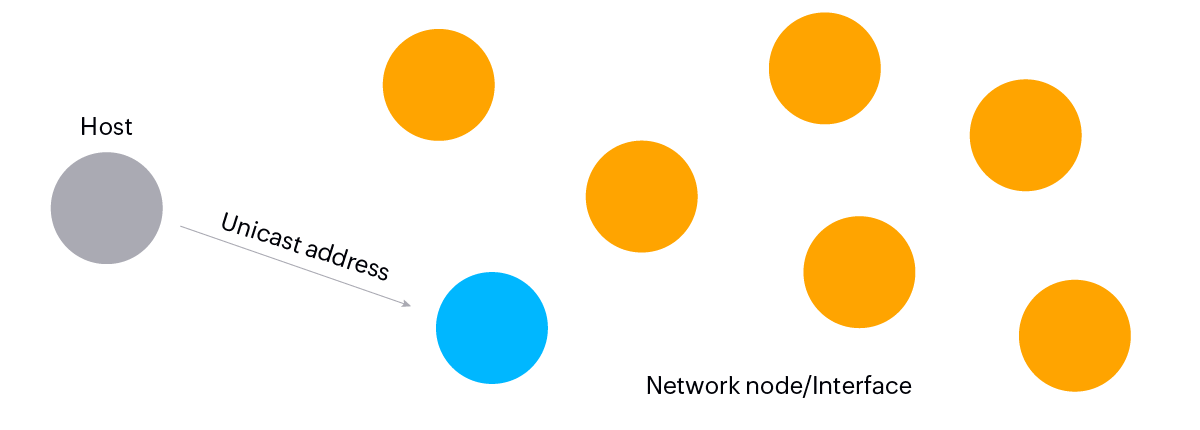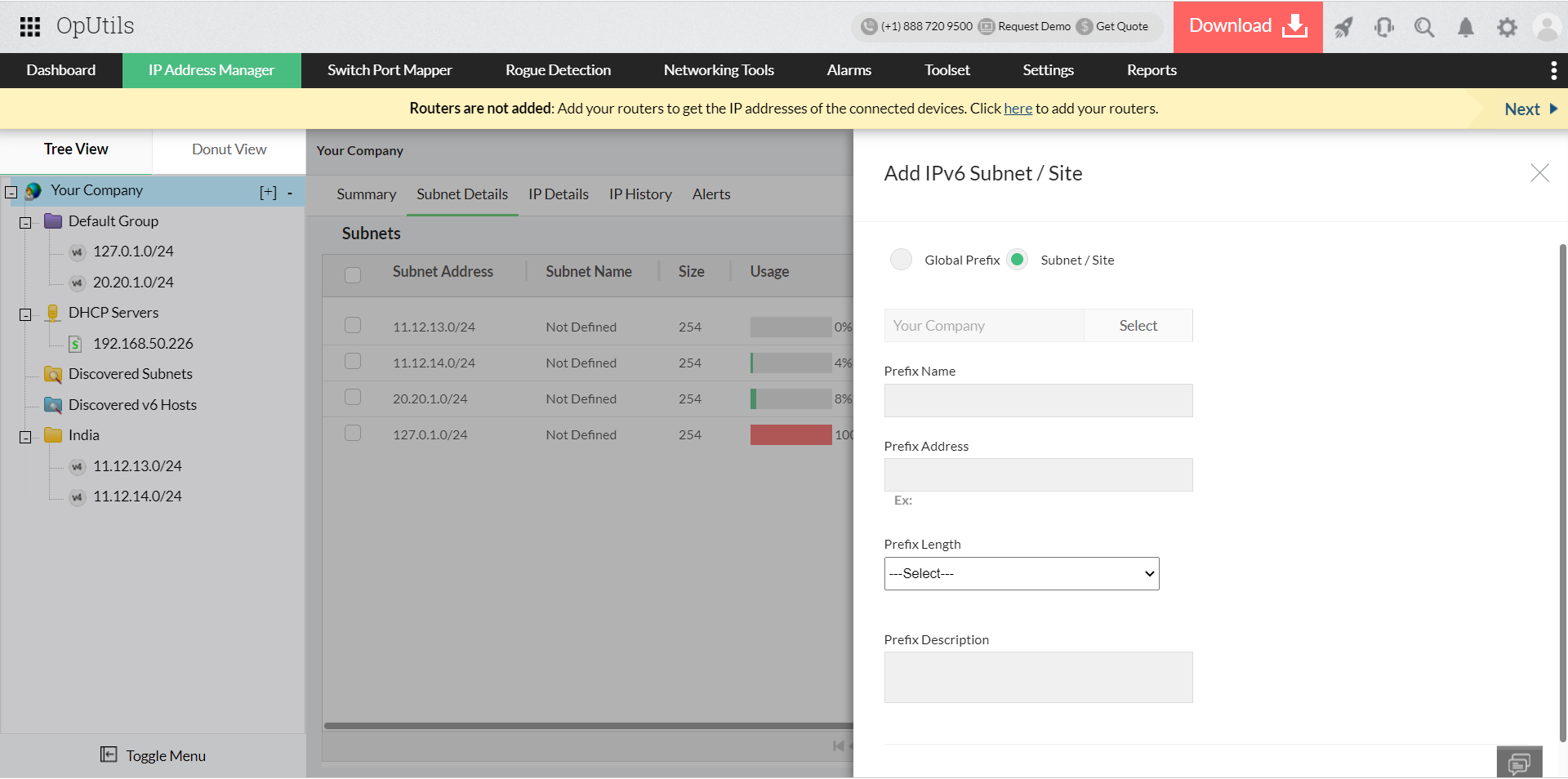An IP address refers to an Internet Protocol address which is an identifier that allows a device to connect to the internet. Let's begin from what is IPv6 address. Internet Protocol Version 6 (IPv6) address is a 128-bit alpha-numeric label used for identifying and locating network interface cards (NICs) or network nodes in a computer network. IPv6 addressing provides a significantly larger address space, offering scalability and flexibility for modern networks.
IPv6 was developed by the Internet Engineering Task Force (IETF) to overcome IPv4 exhaustion. IPv4 is the first addressing infrastructure of the Internet, which contains 32-bit value and has a very small address space compared to IPv6. IPv4 exhaustion occurs when an organization or a business or a region runs out of IPv4 addresses to provide to their consumers. On this page, we'll be looking into:
IPv6 addresses consists of eight 16-bit fields, each separated by a colon. A field is a single block of an IPv6 address. Each field contains 4-digit hexadecimal numbers to represent site prefix, subnet ID, and interface ID. Site prefix is a network address prefix that identifies either a particular website on the internet or the public topology of your network. Subnet ID is an identifier used for identifying subnets. Interface ID is an identifier used for identifying interfaces. For shortening IPv6 addresses, leading zeros (0) are omitted in a field and, if the field only consists of 0's, then the entire field is omitted using double colons. For example, if a field is 0bd8, it can be written as bd8, and if it is 0000, it can be replaced with a double colon "::".

In IPv6 addressing within computer networks, IPv6 address types are classified into three primary categories. These are:
A unicast address identifies a single network interface in a network node. Network packets are sent to the unicast address to be sent to that particular interface.

Multicast address identifies a group of interfaces on single or different network nodes. Network packets are sent to the multicast address to be sent across all the members of that multicast group.

Anycast address identifies a group of interfaces on single or different nodes. Network packets are sent to an anycast address to be sent to an anycast group member, which is physically closest to the host.

Unicast addresses and anycast addresses are generally composed of two logical parts. One part consists of a 64-bit network prefix used for routing, and another one consists of a 64-bit interface identifier used for identifying a network host's interface.
An address scope specifies where an IPv6 address is valid, except for the unspecified address (::). There are three types of address scopes. They are:
In IPv6, there are three different Unicast address assignments based on the leftmost (highest order) adjacent bits. They are:
Global unicast addresses are globally unique and have scopes to connect and route traffic across the globe.
Link-local unicast addresses have local-link scope, and are used by network nodes when communicating with another node on the same link.
Unique local addresses have scope within a private network, and are meant to be used within an organization or a site.
Anycast addresses have the same address scopes as Unicast address scopes, and are often indistinguishable as they are syntactically identical. They are allocated to a set of interfaces in different routers collectively called as the anycast group and the packets are the sent to the nearest anycast group member.
The four least-significant bits of the second address octet (ff0s::) identifies the multicast address scopes. They are used for sending network packets to multicast groups (a group of interfaces in different nodes).
The IPv6 protocol is the newest version of the Internet Protocol (IP) designed to replace the IPv4 protocol. Switching to IPv6 has several benefits:

Maximized address space: Due to the proliferation of Internet-connected devices, IPv4 addresses are running out (around 4.3 billion). On the other hand, IPv6 offers an address space of 128 bits, which means it can handle an unlimited number of devices.
Enhancements in security: There are several built-in security features in IPv6, such as IPsec, which encrypts data and provides authentication. Compared to IPv4, which has to rely on additional security measures, like VPN and firewalls, IPv6 is more secure.
Improved performance: IPv6 includes features that improve overall network performance, such as larger packet sizes, reduced routing tables, and support for multicast traffic, resulting in improved speed and reliable connections.
Global adoption: The IPv6 is becoming the new standard for network and services as many internet service providers (ISPs) have already begun utilizing and deploying.
In conclusion, switching to IPv6 is necessary to accommodate the increasing number of devices in your enterprise network and the services that rely on it.
Adopting IPv6 can help you widen your enterprise' network address space and increase productivity and efficiency. But adopting IPv6 is not an easy task. Here are a few challenges you might face while adopting IPv6:
Costs: IPv6 implementation requires new hardware, software, and training for IT staff. This can result in an increase in expenses.
Compatibility issues: There are some devices and applications that may not work with IPv6 because it isn't fully backward-compatible with IPv4. This is a major challenge for organizations that use legacy systems.
Complexity: The configuration and management of IPv6 is more challenging than IPv4. Organization with limited IT resources might struggle to manage IPv6 address space.
Security concerns: It is imperative for organizations to take steps to ensure the security of their networks while adopting IPv6 as it might introduce new security risks
ManageEngine OpUtils is an evolving IP Address Management (IPAM) and Switch Port Mapping (SPM) software which helps you manage your switch ports, subnets, Supernets, IPv4 and IPv6 address spaces hassle-free.

With OpUtils IPv6 module, you can also manage and monitor IPv6 addresses with global prefixes.
Some of the advantages of using OpUtils to manage your IPv6 addresses include:

The OpUtils IP IPAM module can scale with your organization's growing network with IPv4 and IPv6 address spaces.
After discovering your IPv6 host in the OpUtils console, you can perform various network operations such as SNMP ping, trace-routing, and resolving DNS and MAC address queries.
OpUtils helps you filter and mark your IPv6 addresses according to its statuses (Used, Available, Transient, Scanned, Not scanned, Static IPs). You can also filter and mark IPs by their type (Static-Reserved or Not Reserved) and their authenticity (Unknown, Trusted, Rogue, Guest).
The OpUtils IPAM module is integrated with SPM and Rogue Detection Module, which enables you more visibility into network by correlating SPM with IPAM and providing with the details of the IPs connected with switches and ports.
Would you like to learn more about OpUtils? Book a live demo with our product experts today and get started. We'd be glad to show you all the features that OpUtils provides and guide you through the process of implementing OpUtils in your organization. Want to try OpUtils for free? Download our 30 day free trial or use our product demo and get started in a few minutes. Implement OpUtils into your network and enjoy the benefits of managing your IPv6 addresses hassle-free.
